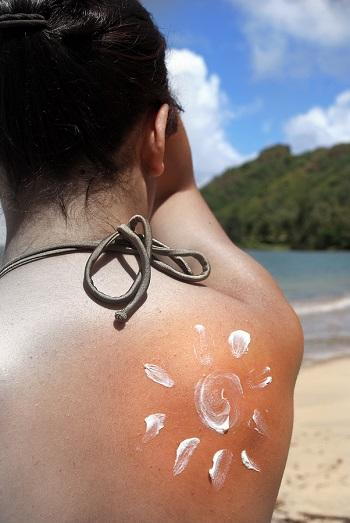Protecting Your Skin from Sun Damage
posted: Mar. 16, 2017.
 Too much exposure to sunlight can be harmful to your skin. Dangerous ultraviolet B (UVB) and ultraviolet A (UVA) rays damage skin, which leads to premature wrinkles, skin cancer and other skin problems. People with excessive exposure to UV radiation are at greater risk for skin cancer than those who take careful precautions to protect their skin from the sun.
Too much exposure to sunlight can be harmful to your skin. Dangerous ultraviolet B (UVB) and ultraviolet A (UVA) rays damage skin, which leads to premature wrinkles, skin cancer and other skin problems. People with excessive exposure to UV radiation are at greater risk for skin cancer than those who take careful precautions to protect their skin from the sun.
Sun Exposure Linked to Cancer
Sun exposure is the most preventable risk factor for all skin cancers, including melanoma. To limit your exposure to UV rays, follow these easy steps.
- Avoid the mid-day sun, as the sun's rays are most intense during 10 a.m. and 4 p.m. Remember that clouds do not block UV rays.
- Use extra caution near water, snow and sand.
- Avoid tanning beds and sun lamps which emit UVA and UVB rays.
- Wear hats and protective clothing when possible to minimize your body's exposure to the sun.
- Generously apply a broad-spectrum, water-resistant sunscreen with a Sun Protection Factor (SPF) of at least 30 to your exposed skin. Re-apply every two hours and after swimming or sweating.
- Wear sunglasses to protect your eyes and area around your eyes.
Risks Factors
Everyone's skin can be affected by UV rays. People with fair skin run a higher risk of sunburns. Aside from skin tone, factors that may increase your risk for sun damage and skin cancer include:
- Previously treated for cancer
- Family history of skin cancer
- Several moles
- Freckles
- Typically burn before tanning
- Blond, red or light brown hair
If you detect unusual moles, spots or changes in your skin, or if your skin easily bleeds, make an appointment with our practice. Changes in your skin may be a sign of skin cancer. With early detection from your dermatologist, skin cancers have a high cure rate and response to treatment. Additionally, if you want to reduce signs of aged skin, seek the advice of your dermatologist for a variety of skin-rejuvenating treatment options.

